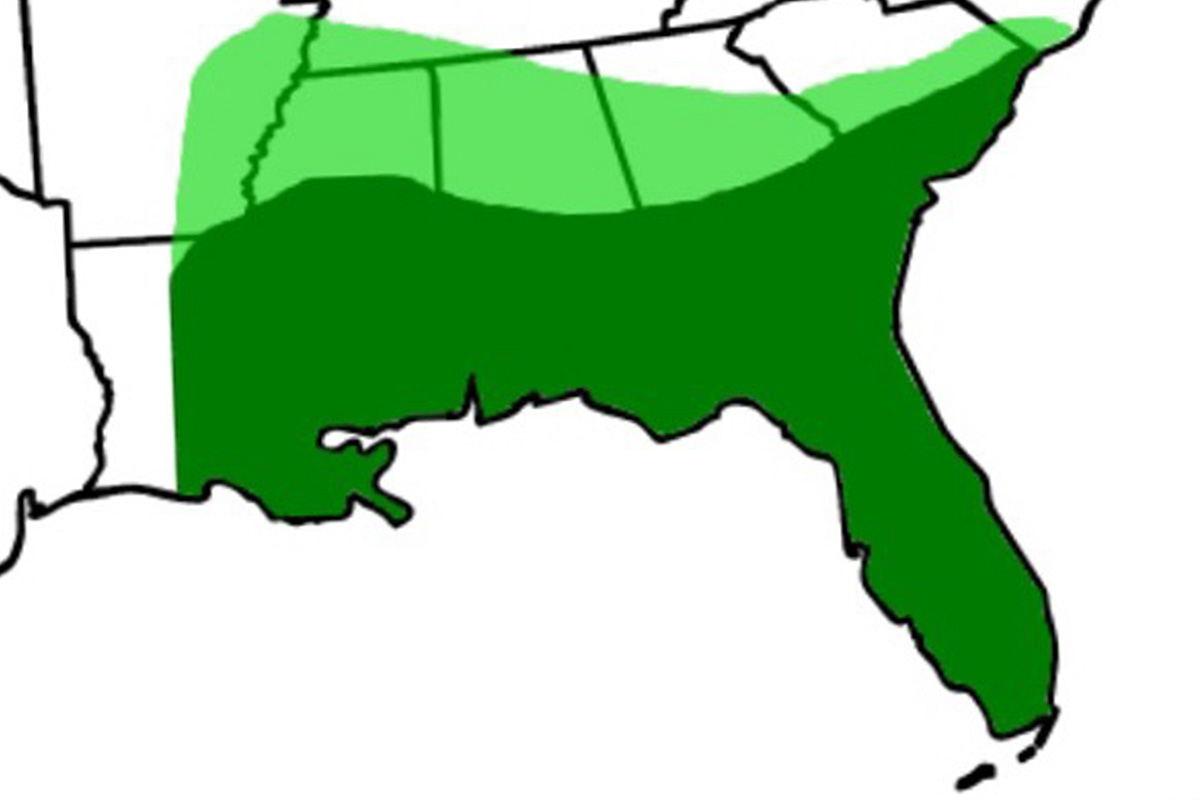We specialize in fire-adapted, herbaceous native meadow plants, which include various bunchgrasses and perennial wildflowers. These plants provide excellent food and cover for ground nesting birds like quail and turkey as well as deer and animal pollinators. They serve as the natural ground cover in open forests and prairies, both wetland and upland, where they receive enough sunshine to thrive. Frequent fire is what keeps these areas open by killing back hardwoods, vines, and briars. When these open areas are not burned, they are often overtaken within three years and the herbaceous ground layer is shaded out. For this reason, prescribed fire is essential to the restoration of open pine forest systems. Native grasses are the backbone of this system since they provide the fine fuels for regular burning.
We grow hundreds of thousands of native grass and wildflower plugs in our nursery for the restoration of these areas. We also have many of these species in field cultivation for seed production. We offer wild-collected and field-grown seed mixes for wet or dry sites.
Our seed collections come from pristine, fire-managed conservation lands and are excellent representations of the following unique Southeastern land systems:
- Upland Clayhills and Sandhills
- Flatwoods
- Shallow Wetlands
 Although, now developed or in production, these exquisite natural areas once covered the outer region of the southeastern coastal plain.
Although, now developed or in production, these exquisite natural areas once covered the outer region of the southeastern coastal plain.
Through years of experience we’ve developed proven techniques for successfully restoring these indigenous ground covers.
By devoting a small area of land to replicating a native grass and wildflower meadow you are directly impacting local pollinator species while enjoying the scenery.
Once established, these meadows are easily managed and kept beautiful by burning in late spring.
Public awareness and acceptance of controlled burning is needed. The fact that the benefits of prescribed fire outweigh the risk it poses is undisputed. Regular burning is essential to maintain the health of our forest systems as well as guard against wildfire by reducing fuels.
Safe burning techniques and the response of pollinators can be easily demonstrated with these meadows.
Within two weeks the burned area transforms as these fire adapted plants explode with new growth.
Southeastern Upland Species:
| Scientific Name | Common Name |
|---|---|
| Sandhill Wiregrass Mixed Plugs |
|
| Andropogon ternarius | Splitbeard bluestem |
| Andropogon virginicus | Broomsedge bluestem |
| Aristida stricta | Wiregrass |
| Carphephorus corymbosis | Coastal Plain Chaffhead |
| Coreopsis lanceolata | Lanceleaf coreopsis |
| Dalea pinnata | Summer farewell |
| Eragrostis spectabilis | Purple lovegrass |
| Eragrostis elliottii | Elliot's lovegrass |
| Lespedeza hirta | Hairy Lespedeza/Hairy bush clover |
| Lespedeza stuevei | Tall Lespedeza |
| Liatris elegans | Pinkscale Gayfeather |
| Liatris gracilis | Slender Gayfeather/Slender blazing star |
| Liatris tenuifolia | Shortleaf Gayfeather |
| Monarda punctata | Spotted beebalm |
| Panicum virgatum | Switchgrass |
| Pityopsis graminifolia | Silver leaf aster/Narrowleaf silkgrass |
| Schizachyrium scoparium | Little bluestem |
| Sida acuta | Sweet Tea |
| Solidago odora | Anise scented goldenrod/Sweet goldenrod |
| Sorghastrum nutans | Yellow indiangrass |
| Sorghastrum secundum | Lopsided indiangrass |
| Sporobolus juncaeus | Pineywoods dropseed |
| Vernonia angustifolia | Narrowleaf Ironweed |
Southeastern Flatwoods and Wet Prairie:
| Scientific Name | Common Name |
|---|---|
| Flatwoods Wiregrass Mixed Plugs |
|
| Andropogon glomeratus | Bushy bluestem |
| Andropogon glomeratus var. glaucopsis | Purple bluestem |
| Aristida stricta | Wiregrass |
| Carex glaucescens | Southern Waxy Sedge |
| Carphephorus carnosus | Pineland Chaffhead |
| Carphephorus odoratissimus | Vanillaleaf |
| Carphephorus paniculatus | Hairy Chaffhead |
| Conoclinium coelestinum | Blue mistflower |
| Ctenium aromaticum | Toothache grass |
| Eragrostis elliotii | Elliot’s lovegrass |
| Helianthus angustfolius | Short sunflower |
| Helianthus radula | Rayless Sunflower |
| Liatris spicata | Blazing Star/Dense blazing star |
| Muhlenbergia capillaris | Muhly grass |
| Panicum anceps | Beaked panicum |
| Panicum rigidulum | Redtop panicum |
| Panicum virgatum | Switchgrass |
| Saccharum giganteum | Sugarcane Plumegrass |
| Scirpus cyperinus | Woolgrass |
| Sida acuta | Sweet Tea |
| Tripsacum dactyloides | Eastern Gamagrass |

